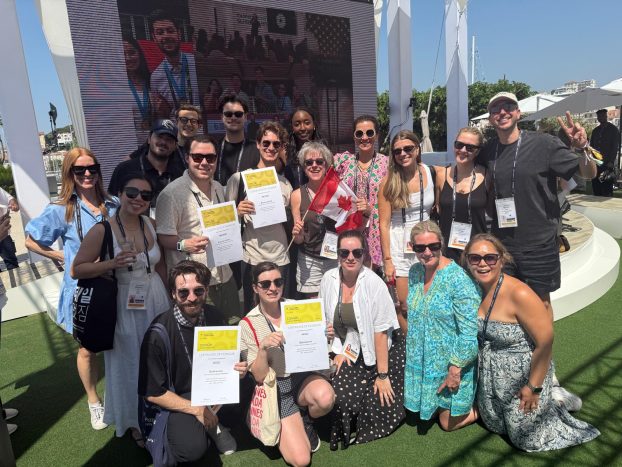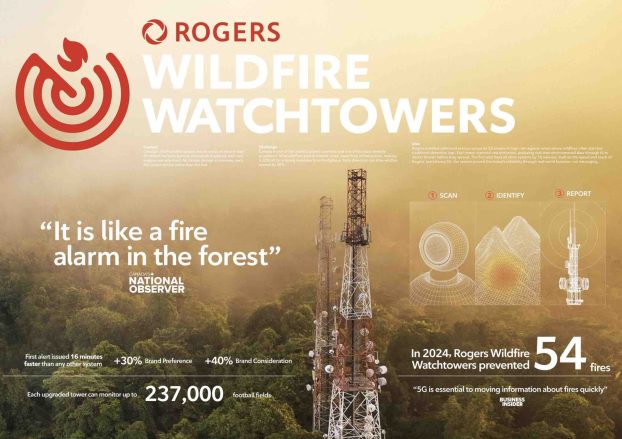"It’s not necessarily that we’re walking away from 30-second spots," says David Chung, president of Toronto-based MaxxMedia. "But if we look at what we’re doing with our clients, more and more of our campaigns have a mix of 30s along with shorter commercial lengths like 10s and 15s, and other [vehicles] like closed captioning."
Broadcasters, for their part, have been only too happy to answer advertiser demand for smaller, more affordable commercial units. In March, for example, Global Television introduced its new "Dot.Spots" – five-second units geared specifically toward dot-com advertisers. The spots, which are sold in sets of six, air on the network during prime time. (CTV is also reported to be talking to agencies about five-second spots.)
"We’re in an economy right now where there just doesn’t seem to be enough inventory to accommodate all the advertisers that want it," says David Cairns, president of Toronto-based Carat Cairns. "A lot of stations seem to be in a sold-out position, for the time being anyway. So one of the ways around that is to focus on other formats. If a station can sell two 15s instead of one 30, they can get twice as many advertisers on board."
Most advertisers, it’s fair to say, would still rather do a 30 or – luxury of luxuries! – a 60. (So, too, would most agency creative departments.) The realities of the medium, however, dictate a willingness to at least consider using non-traditional lengths.
"TV is just becoming more and more expensive," says Fiona Gallagher, senior vice-president, media director with Toronto-based TN Media. "And in the quest to keep efficiencies good, advertisers are leaving no stone unturned. Shorter units let you get into the game at a lower investment level – and, just as important for a lot of advertisers, you can [run your ad] in the marketplace for a longer period of time."
Kathy Gardner, media director with Toronto-based Bates Canada, agrees. "It’s a possible solution for advertisers whose budgets aren’t keeping pace with the media inflation," she says.
At present, 15-second spots remain the most commonly used shorter-form unit. (For the record, 15s are generally costed at a premium, selling for 65% of the price of a 30.) Some advertisers are also experimenting with 10-second units. Cossette Communication-Marketing of Toronto, for example, has created 10s for its client CGI, an information technology firm, by taking a closed captioning sponsorship buy and adapting that unit to include brand-sell creative.
If anything, the range of unit sizes available should increase as technology advances and commercial scheduling becomes more automated.
"As the broadcast world goes more digital, the medium should be able to accommodate pretty much any length of unit," says David Cairns.
If there’s a concern associated with the use of shorter commercial units, it’s the risk of increasing the amount of clutter on the airwaves – an issue much on the minds of media planners these days. Obviously, the more 15s and 10s that broadcasters sell, the more commercial messages that will be bombarding viewers.
"It’s kind of a double-edged sword," says Darryl Nicholson, associate media director with Ammirati Puris Lintas in Toronto. "On the one hand, it serves the purpose of letting some advertisers get on air who normally wouldn’t be able to. But as a media planner who’s got clients running 30-second ads, it’s concerning. Because I think consumers are starting to filter out more and more of our messages."
For media agencies, this poses something of a dilemma. They may decry the way clutter is eroding the effectiveness of the medium – but if a client’s interests are best served by purchasing 15s or 10s, they can hardly abstain. After all, if they don’t take advantage of the opportunity, what’s to stop a competitor from doing so?
"In order to keep pace, you’ve got to buy that stuff [if it’s available]," says Sara Hill, senior vice-president, managing director with Toronto-based M2 Universal. "So you end up contributing to the overall problem of clutter."
Mind you, not everyone’s convinced that clutter is quite the menace it’s made out to be. MediaVest Worldwide president Sherland Forde, for one, describes it as "a non-issue." Today’s viewers – the younger ones, in particular – are used to processing more information than their counterparts of a generation ago, he says, and have no real problem with the larger volume of commercial messages on the airwaves.
So how are shorter-form units best used?
Traditionally, 15s have been employed to extend a television campaign: The advertiser will launch with 30s to establish the brand, then move to 15s to build frequency.
If your campaign is going to incorporate 15-second spots, then it’s advisable to have a whole pool of them. As MaxxMedia’s David Chung explains, 15s generally allow for greater frequency, which in turn increases the risk of wear-out.
A five- or 10-second spot, meanwhile, works best as a means of maintaining top-of-mind awareness for a brand, or else driving consumers to a Web site or toll-free number.
Given the challenges involved with the use of these non-traditional formats, it’s particularly important that the media and creative team work closely together on any effort that incorporates shorter-form units.
"The two sides have to work hand-in-hand on something like this," says Leslie Krueger, vice-president, group media director with Toronto-based OMD Canada. "We wouldn’t recommend, say, five-second spots without having long discussions with creative to make sure it was the right thing to do."
"Media planners need to be very sympathetic towards creative," agrees Cairns. "It’s easy to say that we should run a 15 instead of a 30 because we’ll get more reach and frequency for our budget. But if the creative people cannot execute the strategy within those 15 seconds, then it doesn’t have a lot of value."
Since television rates show no sign of dipping, it’s safe to assume that shorter spots will continue to gain in popularity. And it’s true that, for a lot of advertisers, the use of these units is a viable means of solving cost problems. But before they make the decision, Kathy Gardner says, clients and agencies must be certain that their brand message can be communicated effectively in the time frame.
"There are some things that you just cannot say in 15 seconds," she cautions.
Also in this report:
– CCM arouses interest with sperm spot p.TV3
– Painting the smaller canvas: How creatives make their mark in 15 seconds or less p.TV4
– Red Rose resurrects brand with funeral spot: Retires ‘Only in Canada…’ tagline in favour of ‘A cup’ll do you good’ p.TV6
– Ford Focus puts the squeeze on credits: Sponsored previews of top-rated shows in bid to give campaign added impact p.TV8
– Jetta campaign a brand-new love story: Automaker bids farewell to popular Phil and Loulou characters p.TV10
– Is TV worth the money? p.TV12
– BTV blurs line between editorial, advertorial: Companies featured on business show pay about $10,000 for repackaged material p.TV13




























